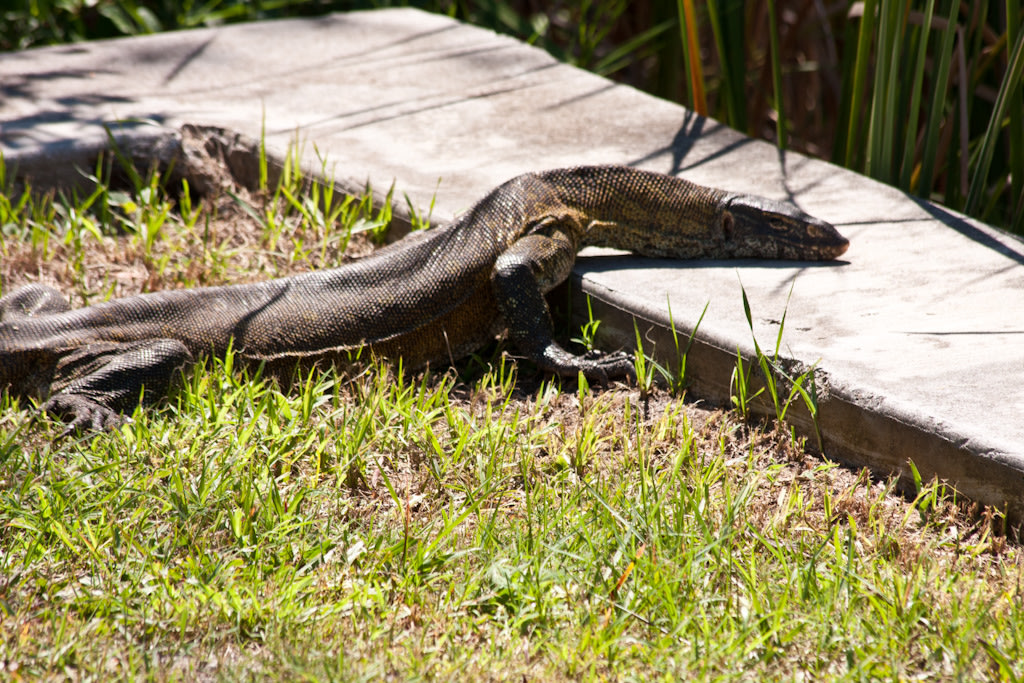8-foot-long carnivorous cat-eating lizards are invading Florida
Business Insider
By Kevin Loria April 10, 2015 2:07 PM

Nile Monitor lizard Florida
A Florida resident spotted one of the creatures sunning itself in his backyard.The exotic pet trade has a way of introducing destructive and potentially dangerous creatures to places in which they don't belong, and Florida's sunny, warm climate makes for a perfect home for many of these invasive species.
People buy a small snake, lizard, or colorful fish, and when it gets too big to handle, they dump it in an area in which they figure it will fit in. But if these unleashed creatures fit in too well, they not only thrive in their new homes — but without natural predators they can wreak havoc on the surrounding ecosystem, unbalancing it and potentially wiping out the native animals.
Lately we've heard a lot about the Burmese pythons and the more aggressive African rock pythons that wildlife officials fear will wipe out the foxes, rabbits, deer, raccoons, opossums, and bobcats of the Everglades.
But another creature that Florida wildlife officers are trying to get a handle on is the Nile monitor lizard, a cousin of the most famous monitor lizard, the Komodo dragon, which has been spreading through the state since at least 1990.
Thousands are thought to be loose in parts of the state, but they have recently begun to appear in Palm Beach County, and officials are hoping they can eliminate the lizards in the area before they establish a firm toehold.
Wildlife officials armed with shotguns will be increasing patrols of Palm Beach County canals from once a month to four to six times a month to try to hunt the reptiles down, according to the Sun Sentinel. The plan is to catch or shoot the lizards on sight — they've got 20 in Palm Beach since July.
A Nile monitor in South Africa.The lizards are native to almost all of Sub-Saharan Africa and grow up to 5 feet long on average, with large specimens reaching 7 or 8 feet. They typically have yellow markings on their back and can range in color from yellow to olive green or dark brown.
And while they don't usually menace humans unless provoked (though one pet-education website says they "can inflict serious wounds to an inexperienced handler"), they are most definitely threats to local burrowing owls, tortoises, and other creatures. They have "even been known to eat cats," according to the Sun Sentinel.
Monitors have spread far enough that they are a serious problem, according to David A. Steen, a conservation biologist who included them on a list of the "worst invasive reptiles" he chronicled for Slate. He describes the Nile monitor as a "hulking beast" that's "a voracious predator of any creature smaller than itself."
In addition to these massive lizards and the seemingly unstoppable pythons, poisonous lionfish are taking over Florida reefs.
Let's not set loose any more wild creatures that don't belong in Florida, OK?
https://finance.yahoo.com/news/8-foo...180700956.html